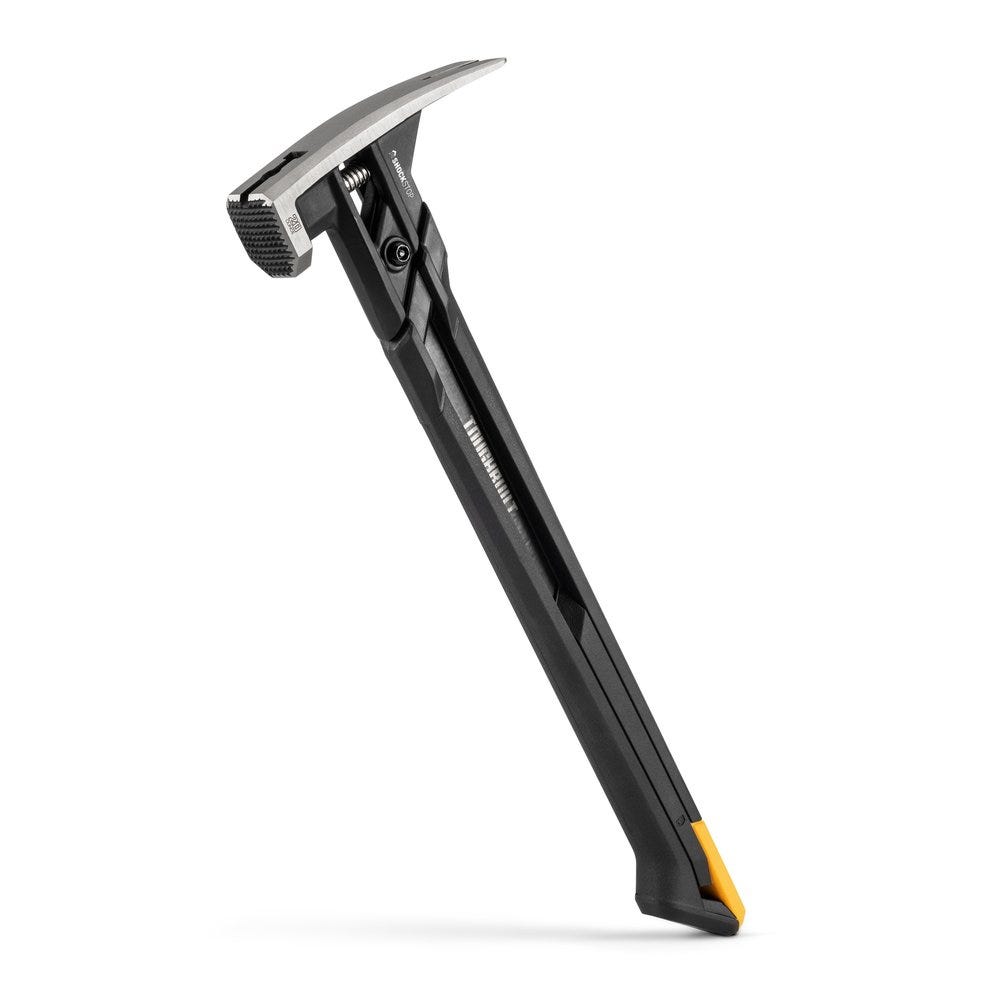Is alternative grading innovative?
And if so, is that good or bad?

Alternative grading is often framed as a particular form of instructional innovation in higher and K12 education. This is both a blessing and a curse. A blessing, because innovation generally speaking often leads to improvements in the human condition, and it's good to be involved in those improvements. A curse, because innovation does not always lead to real improvements; it just as often signifies big ideas that aren't well thought out, that cost lots of money and time and end up going nowhere, and which add more labor to faculty who didn't ask for it.
Is alternative grading really innovative? And if it is, is that a good thing?
What is innovation?
There's no single widely-accepted definition of "innovation". But Google, one of the most historically innovative organizations of all time, describes it using three characteristics. Namely, an "innovation" is something that is:
Novel,
Surprising, and
Radically useful.
It's not hard for a product (including more than a few of Google's own products), idea, or movement to check off one or possibly two of these characteristics. But hitting on all three can be quite hard, and true innovations are therefore rare, and have an impact when they occur that can be difficult to perceive until time has passed and we can observe their effects.
Every year, Popular Science puts out a list of the top innovations of the previous year. Let's look at a couple of examples from the 2023 list.
The Sphere in Las Vegas. If you haven't seen videos or photos of this structure in Vegas, take some time to go do that. It's an innovation in both architecture and the arts. It's novel -- unique in fact. Surprising -- astounding, in fact, if you've seen performances from inside. Is it useful? Well, we're talking about art, so usefulness is subjective. But it's definitely true that, as an immersive 3D performance venue, the Sphere opens up avenues for artistic expression that didn't exist before. That's aspect of usefulness I'll come back to later.
ToughBuilt shock absorbing framing hammers. On the other hand, innovations don't have to be breathtaking leaps forward. This device, if you want to call it that, is a hammer -- but it has a shock absorber built into the head, so it reduces or removes the repetitive stress on one's arm. Is it new? Hammers have been around for ages, but I've never seen one that has a shock absorber built into it. Is it surprising? I think so -- I had never really considered the physical strain that a contractor or building laborer must undergo in their arms, from banging away all day with a hammer. And it's definitely useful, because hammers are always useful and this solves an important problem.
So, innovations can come in all manner of shape, size, and scope. How do alternative grading practices, the ones that follow the Four Pillars model, stack up in this description of innovation?
Is alternative grading novel?
Yes -- but actually no.
On the one hand, alternative grading is a new development precisely because it is "alternative". It is a push back against the traditional grading approaches of the last 130 years that are predicated on one-and-done assessment, the absence of meaningful feedback loops, and spurious statistics. In fact, it can be novel to the point of inconceivability. Many of us who introduce alternative grading to other faculty, and especially to students, find that the hardest thing about it is just getting others to realize that different ways to grade that might make sense, exist.
But on the other hand, the tradition against which alternative grading pushes, is only 130 years long. The "traditional" system we currently have, did not appear until 1896 at Mount Holyoke College in the USA. It was briefly preceded, during the mid-19th century, by a spate of, let's say "interesting" attempts to impose structure on the evaluation of student work. The earliest recorded such attempt was at Yale University in 1785, where student work was given one of three adjectives to describe it -- a method that bears greater resemblance to ungrading than it does to points, percentages, and the like.
Keeping in mind that the first university was constituted in 1088, the emergence of the now-traditional system in 1896 represents less than 14% of the lifespan of formal higher education1. The other 86% of the time, there was either nothing in terms of grades, or grading systems like the one used at Yale. So it would be entirely fair to say that traditional grading is the newcomer, not "alternatives".
But alternative grading is so new, one might even say alien, to today's population of educators and students that the "novel" aspect of innovation tips in that direction.
Is alternative grading surprising?
Again -- yes, but actually no.
Yes, alternative grading is surprising. All you need to be convinced of this, is explain the Four Pillars model to someone who has never heard of it before. Like most instructors, I get to do this with 2-3 sections of classes every term; I also do this with faculty in workshops and talks. Sometimes I get to talk about it with people who are ot in education at all.
When I present alternative grading as a concept to people new to the idea, I get a wide variety of reactions: curiosity (What a weird idea, how does this actually work in practice?), relief (Oh thank goodness, I can retake quizzes!), skepticism (There's no way this would ever work in my situation), dismissal (This is a bunch of woke BS), and more. But never indifference. For better or worse (probably for the worse), people's connections with grades in school is visceral and deeply ingrained in how they perceive themselves. When you propose making fundamental changes to grading systems, then, you are proposing a fundamental change to their realities. I count that as a form of "surprise" although it's not always pleasant.
But on the other hand, what is so surprising about evaluating people's work based on the outcome of feedback loops? When you look at the entire real world, it seems that the only place where the Four Pillars model is not used, is school. And even in academic settings, feedback is common. When you send off an article to a journal, you do not get a numerical score back -- you get feedback, and suggestions for improvement and (often) the opportunity to revise and resubmit. When a professor goes up for tenure, they don't take a test and the outcome of the test determines the outcome of the process; they put together a portfolio of work, aimed at certain standards, and it gets feedback and the opportunity to improve.
So alternative grading shouldn't be surprising -- but it is. And I think that speaks to how badly it's needed.
Is alternative grading radically useful?
This one is an unambiguous yes. As we’ve seen here on this blog before, alternative grading...
And this is just the research-backed results. For many who use alternative grading in practice, it passes the eye test even if we are still generating data about it: You get better relationships between students and instructors, less stress and worry over tests, and higher academic standards due to the presence of reattempts without penalty.
Conclusion
Economist Michael Strain was recently interviewed about another innovation that many of us in higher education are thinking about: artificial intelligence. He makes this point about how we humans perceive the disruption that comes from AI innovation:
I think that technological innovation leads to creative destruction, and the things that technology creates are things that, by definition, don't currently exist. And the things that innovation destroys are things that do exist. And so we have a tendency, I think, to look around at our lives, and look around at the economy, and look around at the world, and think about, “Okay, what could AI replace that we're currently doing?” And it's much harder to think about, “Okay, what are all the things that AI technology will create that don't currently exist?”
Innovations, in other words, have a destructive nature, and that’s possibly why we sometimes view them with suspicion. But that nature is also creative. Alternative grading follows this innovative path. Like the shock-absorbing hammer, it's a simple reimagining of how we think about and handle student evidence of learning that keeps all the things that work while removing that which is unhelpful. And like the Sphere, it creates new opportunities for working with students. It can unlock our imagination about what's possible in our work as instructors, and help students to grow in ways that we hadn't considered before.
To put that number in perspective: If higher education were a 40-year old person instead of a 1000-year old institution, then grading practices — of any kind — would be like a job or hobby that this person started when they were 35. Not insignificant, in other words, but the vast majority of that hypothetical person’s development and life experiences had already taken place by the time this new thing appeared.




To me, the distinction between alternative and traditional grading is not black-and-white. Instead, I think we can mix and match procedures, using ideas from both approaches.
For instance, I like to treat homework problem sets as formative assessments, with lots of chances to get feedback and resubmit work. But precisely because of that I don't weight this work heavily in the final grade; after all, it's supposed to be formative, not summative. As a result, course grades are heavily weighted towards two exams, which make up 80% of the grade. So it's a combination of lots of formative practice along with two high-stakes exams.
As always, thanks for a stimulating post. Something for you and your readers to consider:
I recently coauthored a paper describing a taxonomy that is capable of characterizing pedagogical innovation (Palmer, M. S., & Giering, J. A. (2023). Characterizing pedagogical innovation in higher education. Innovative Higher Education, 49, 453-473. https://doi.org/10.1007/s10755-023-09681-6).
In addition to defining pedagogical innovation, we describe a set of possible outcomes, risks, barriers, and costs of an innovation. In short, it's probably not enough to say whether alternative grading is innovative. We need to consider in what ways it is innovative based on contextual factors.
I'd love to you see a "Part 2" where you explore alternative grading as a pedagogical innovation through this lens. :-)